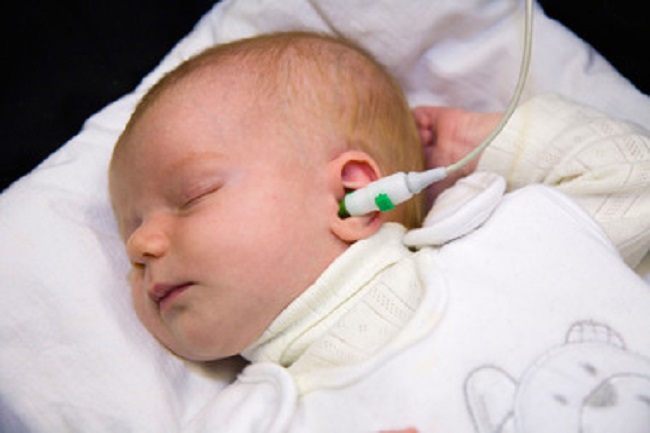
Most babies hear well right from birth, but about .02 percent of the general population of newborns and some 2 percent to 4 percent of babies in neonatal intensive care units (NICU) have less than perfect hearing, according to the University of Iowa Hospitals and Clinics.
Infants born in hospitals are routinely screened for hearing. It’s important to identify poor hearing as soon as possible, since babies rely on hearing to develop cognitive skills, speech and language skills social skills.
An infant hearing screening is safe, does not hurt and takes about 10 minutes. Most babies sleep through the screening. Occasionally, a second screening is needed because there was temporary fluid in the ear or there was a lot of noise in the room or the baby was moving a lot. Typically the re-screening shows normal hearing.
As a child grows, its hearing should be checked at each well-child visit. Tell your child’s doctor about any concerns with your little one’s ability to respond to or imitate sounds and words. If a toddler or preschooler shows signs of poor hearing, an audiologist should be consulted.
With the recent outbreak of measles, it’s also important to know that a side effect of measles can be permanent hearing loss. For more information, visit the website of the U.S. Centers for Disease Control and Prevention.
Ann Cochran is the health navigation coordinator in the Dallas County Public Health Department.
















